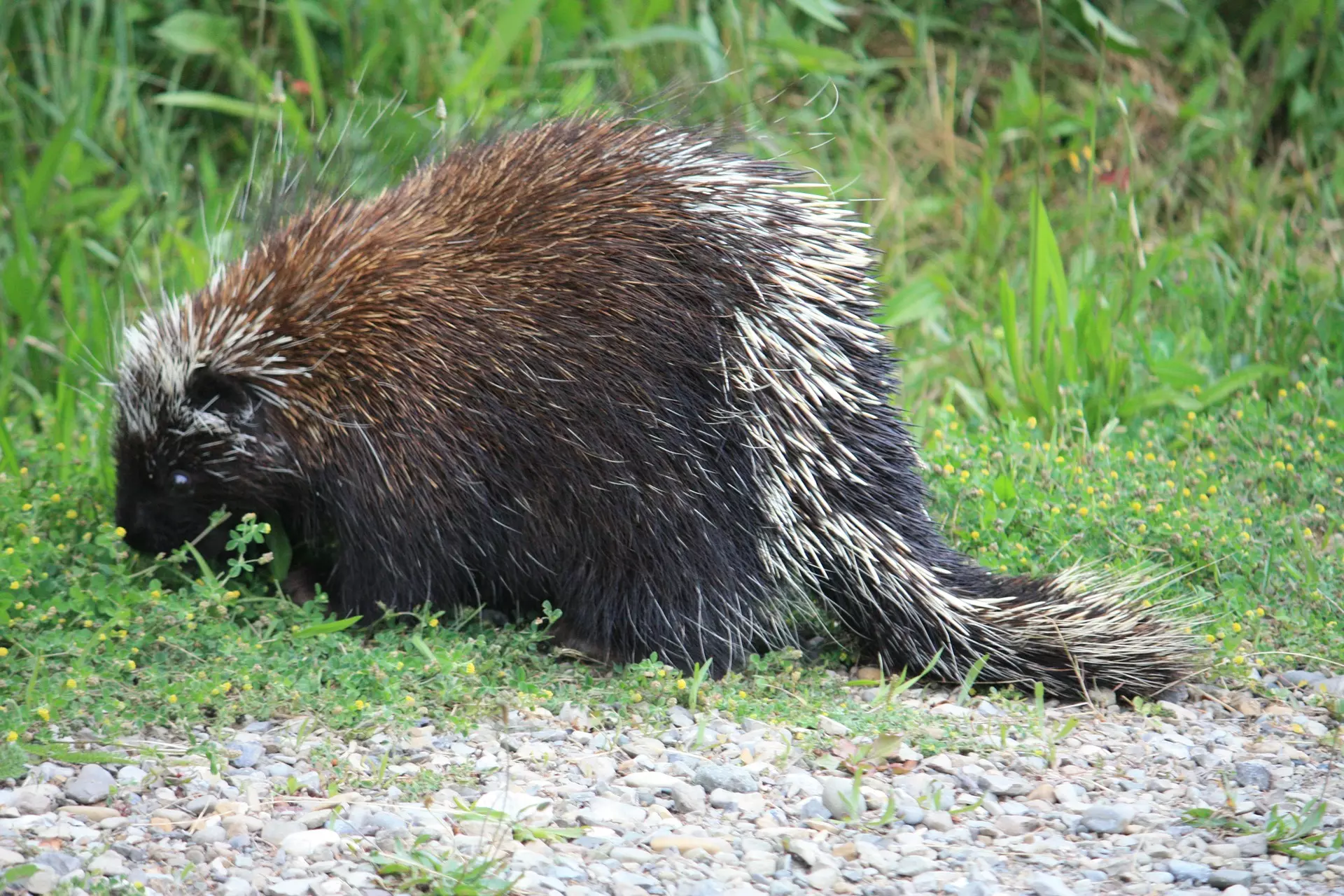In Latin, the name porcupine means “spiny pig” or “quill pig,” but they are not swine but a large rodent. The North American porcupine is the second largest in the rodent family and globally, only the beavers and South American capybara are larger.
There are two families of porcupines: the Old World porcupine with 11 species and the New World porcupine with 12 species. North America has only one species while Central and South America have the other 11. Most of old-world porcupines spend their time on the ground, while the new-world species live in trees. The North American porcupine is no exception, using its large claws, strong limbs, and prehensile tail to live much of the time up in the branches. In fact, the only reason this rodent finds itself on the ground is to get a drink and find the next tree to climb.
The North American porcupine has a round thick body weighing up to 30 pounds with a length of roughly 35 inches. Although a good climber, it is slow and careful. After all, there is no reason to be in a hurry since the food it eats is not going anywhere. And what does this prickly porcupine eat up in the trees? Tree bark, young shoots and leaves, berries and fruit. Their favorite trees are the aspen, cottonwood, and willow. They often use spruce and pine trees as hideouts to sleep.
God blessed porcupines with around 30,000 quills. each equipped with up to 800 fishhook-like barbs near the tip, making it very difficult to remove embedded quills. These quills are hollow, modified hairs that are loosely attached to the skin, letting them detach easily so the porcupine can escape while its attacker is occupied with a painful situation. Porcupines swim well because their air-filled quills give them added buoyancy.
God created porcupines with a strong natural antibiotic on their skin and quills so if they ever accidentally poke themselves with a quill, the wound will not get infected. They do occasionally fall out of a tree and poke themselves, so the advantage of having a built-in antibiotic is helpful.
Porcupines do all they can to keep their backs toward their attacker, even backing up and swinging their quill-filled tails. Even with such a defense, some predators will still attack and eat porcupines. The fisher, a large relative of the marten, regularly preys on this rodent. They will continually bite at the face of the porcupine until it is in shock, then flip it on its back and go after its unprotected underbelly. Similarly, an experienced mountain lion will take its paw and flip this large rodent over.
Male porcupines are known as boars and females are called sows. They breed in the fall and give birth to one pup in the spring. The young are most often called pups, but porcupettes are the proper term. The young are capable of being on their own by the following fall.
Porcupines are mostly solitary as adults, but if they ever get together, a group of porcupines is known as a prickle. While most rodents live fast and die young, the porcupine tends to break this rule. They have, thanks to their quills, far fewer predators, and thus live longer lives — up to 25 years in the wild.
And God said, “Let the earth bring forth living creatures according to their kinds: cattle and creeping things and beast of the earth according to their kinds.” And it was so. (Genesis 1:24)







Great article, Doug! I enjoyed it and learned a lot.